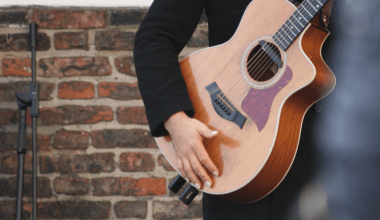Snap music emerged as a unique subgenre of hip-hop in the early 2000s, captivating listeners with its minimalistic beats and catchy hooks. Characterized by its rhythmic snaps, simple melodies, and infectious energy, snap music carved its niche in music history. It wasn’t just about sound; it was a movement that inspired dance, cultural trends, and a fresh approach to music production.
In this blog, we’ll dive deep into snap music, exploring its origins, defining features, major artists, and lasting impact on modern music. Whether you’re a longtime fan or just curious, this guide will take you through everything about this influential genre.
What is Snap Music?
Snap music is a subgenre of hip-hop that originated in Atlanta, Georgia, in the early 2000s. Its hallmark is the use of finger snaps as a primary rhythmic element, accompanied by simple beats and repetitive lyrics.
Key Features of Snap Music:
- Minimalistic Production: Often features sparse drum patterns, claps, and snaps.
- Catchy Hooks: Repetitive and easy-to-remember lyrics.
- Danceability: Tracks are designed to encourage dance and movement.
- Party Vibes: Upbeat and fun, snap music is perfect for social gatherings.
Snap music became popular for its simplicity and ability to connect with audiences on a basic, emotional level.
The Origins of Snap Music
Snap music traces its roots to Atlanta, where local artists sought to create a sound distinct from traditional Southern hip-hop. Influenced by crunk and party rap, snap music prioritized groove and accessibility over lyrical complexity.
Early Pioneers:
- Dem Franchize Boyz: Known for hits like “Lean wit It, Rock wit It.”
- D4L: Their track “Laffy Taffy” became a cultural phenomenon.
- Soulja Boy: Helped popularize the sound globally with tracks like “Crank That.”
Atlanta’s thriving music scene provided the perfect environment for snap music to flourish.
Snap Music’s Cultural Impact
Snap music wasn’t just a sound; it was a movement. Here’s how it influenced music and culture:
- Dance Trends: Snap music inspired viral dance moves, such as the “Lean wit It, Rock wit It” dance.
- DIY Music Production: The genre’s simplicity encouraged aspiring artists to experiment with music creation.
- Social Media: Early platforms like MySpace and YouTube played a crucial role in spreading snap music.
- Fashion: Snap music culture brought bold, flashy clothing and accessories into the spotlight.
Its influence extended far beyond music, shaping trends in dance, style, and internet culture.
Major Artists in Snap Music
Several artists were instrumental in defining and popularizing snap music. Here’s a look at some of the key figures:
1. Dem Franchize Boyz
- Notable Tracks: “Lean wit It, Rock wit It,” “White Tee.”
- Impact: They brought snap music to mainstream audiences with their catchy hooks and energetic performances.
2. D4L
- Notable Tracks: “Laffy Taffy,” “Betcha Can’t Do It Like Me.”
- Impact: Their playful, light-hearted approach became a hallmark of the genre.
3. Soulja Boy
- Notable Tracks: “Crank That,” “Snap and Roll.”
- Impact: He combined snap music with internet marketing, becoming one of the first viral artists.
These artists not only defined the sound of snap music but also influenced the direction of hip-hop as a whole.
How to Create Snap Music
If you’re inspired by the genre and want to create your own snap music, here’s how:
- Start with a Simple Beat: Use a drum machine or DAW to create a basic rhythm.
- Add Snaps and Claps: These are essential for the signature snap music sound.
- Keep Melodies Minimal: Use repetitive, catchy tunes.
- Focus on the Hook: Write a chorus that’s easy to sing along to.
- Encourage Movement: Make sure your track has a danceable groove.
Snap music is all about fun and simplicity, so don’t overthink it—just enjoy the process!
The Decline and Legacy of Snap Music
Snap music’s popularity began to wane by the late 2000s as other hip-hop subgenres, like trap, gained prominence. However, its influence remains evident:
- Modern Hip-Hop Beats: Elements of snap music can be heard in today’s trap and pop tracks.
- Dance Challenges: The tradition of pairing music with dance continues on platforms like TikTok.
- DIY Culture: Snap music showed aspiring artists that simplicity could lead to success.
Though no longer at the forefront, snap music’s legacy lives on in contemporary music and culture.
Why Snap Music is Making a Comeback
Recently, there’s been renewed interest in snap music, driven by nostalgia and its compatibility with modern platforms like TikTok. Here’s why:
- Viral Dance Trends: Snap music’s simplicity makes it perfect for choreographed moves.
- DIY Accessibility: Aspiring artists continue to be inspired by its minimalistic production.
- Timeless Appeal: The genre’s fun, carefree vibe resonates with new audiences.
Snap music is proving that its impact is far from over.
Conclusion
Snap music may have started as a regional sound in Atlanta, but its impact has been felt worldwide. Defined by its simplicity, catchiness, and danceable grooves, it’s a genre that continues to inspire artists and audiences alike.
Whether you’re revisiting the classics or creating your own tracks, snap music is a reminder that sometimes, less is more.
Related Articles:
For further reading, explore these related articles:
- How to Create a Viral Snapchat Song A Complete Guide for Beginners
- AI Music App: Revolutionizing Music Creation and Production
For additional resources on music marketing and distribution, visit Deliver My Tune.






